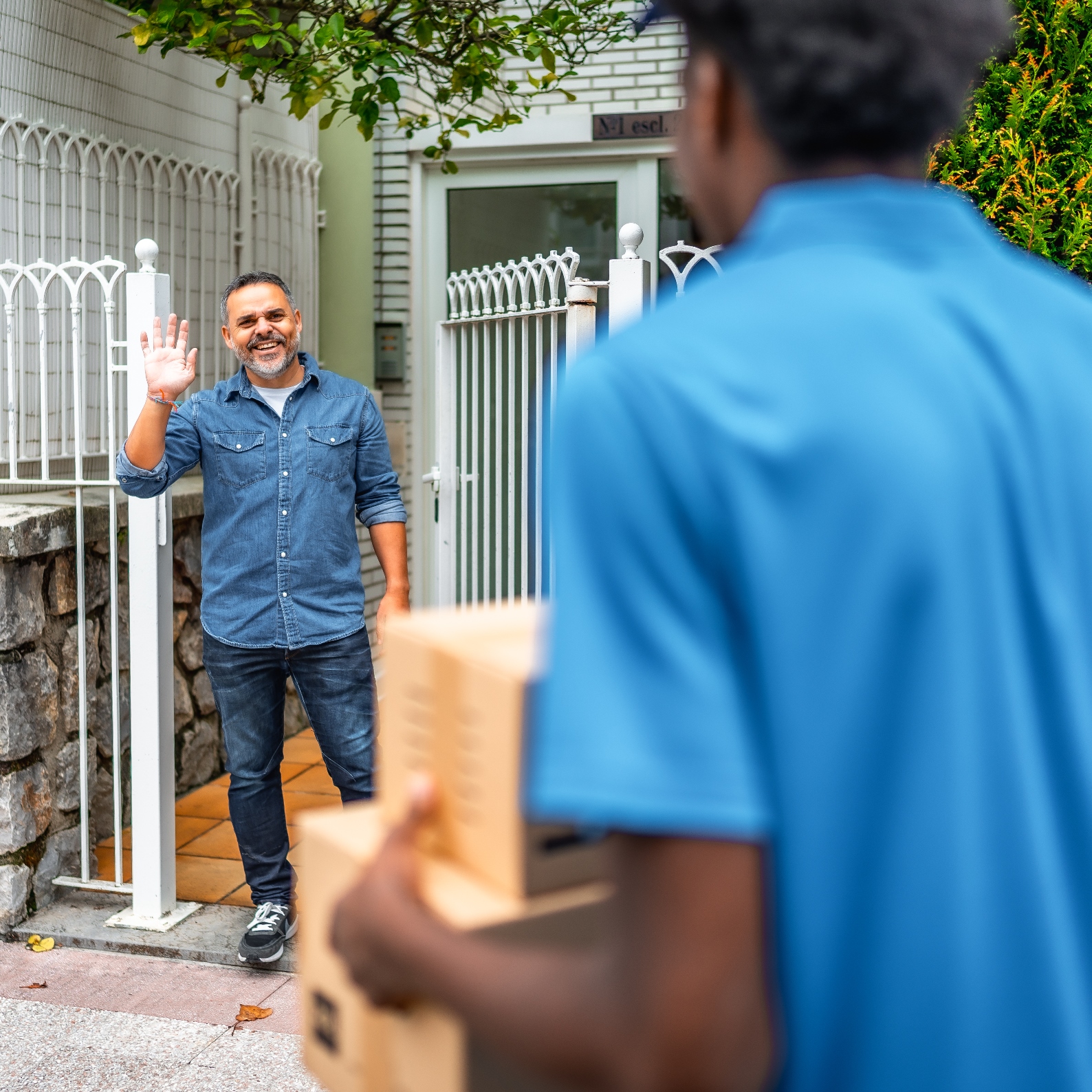You know the drill: trucks creep through one-way streets, couriers dodge traffic, and customers refresh tracking links, all because the last mile refuses to cooperate.
Whether you're delivering a sofa to a fifth-floor walk-up or working to sell a house, without leaving buyers waiting at the curb, that stubborn gap between “almost there” and “job done” can feel endless.
High Delivery Expenditures
Rising labor, fuel, and re-delivery fees can drain margins fast, yet executives often lump them under “necessary costs” instead of attacking them with focused, data-backed tactics.
- Bundle predictable orders. Create subscription “delivery days” so nearby customers receive packages together, trimming vehicle miles and wage hours while protecting promised service levels.
- Play with parcel density. Incentivize baskets over a target weight or value; higher stop productivity immediately offsets per-order handling and toll charges.
- Exploit spare capacity. Offer evening pick-ups for neighboring businesses; backhauls monetize return trips and shrink total cost per mile.
- Automate the math. A cost-to-serve model pairs stop-level data with profitability dashboards, revealing expensive outliers before they silently erode quarterly results.
These moves, detailed in MIT Sloan research, consistently slash last-mile expense percentages without sacrificing customer satisfaction or brand promise.
Urban Gridlock Pressures
Cities choke on congestion, curb scarcity, and unpredictable construction, so your vans crawl while customers refresh tracking pages; beating gridlock demands multilayered, real-time discipline.
Tap Dynamic Traffic Feeds
Integrate municipal sensor data and crowd-sourced alerts, letting algorithms reroute drivers minutes before bottlenecks materialize, not after vehicles are immobilized.
Secure Time-Window Loading Zones
Apply for city micro-permits granting short curb access; guaranteed curb space prevents double-parking fines and reduces dwell times, averaging seven costly minutes.
Switch Vehicle Form Factors
Cargo bikes, e-scooters, and sidewalk robots weave through jammed streets, maintaining on-time rates above ninety percent even during rush-hour gridlock.
Missed Doorstep Drop-Offs
Nothing inflates cost or annoys shoppers faster than arriving home to a “sorry we missed you” tag; turning misses into hits requires proactive orchestration.
- Predict presence patterns. Machine-learn household availability based on past scans and payment timestamps, then suggest narrow windows that buyers actually accept.
- Push real-time nudges. SMS links let recipients reschedule or authorize secure locations up to the driver's final mile, preventing last-second failures.
- Partner with lockers. Networked parcel lockers at gyms, groceries, and transit hubs cut failed attempts to near zero and lift customer flexibility.
- Capture visual proof. Geo-tagged photos and e-signatures squash “item not received” disputes, shrinking customer-service calls and refund leakage.
Eliminating missed deliveries fuels both profitability and loyalty, proving that convenience does not require unlimited driver retries or unsafe porch stacking.
Eco Impact Concerns
E-commerce convenience hides a carbon shadow; urban deliveries now emit hefty greenhouse gases, demanding greener practices before regulators or consumers impose painful penalties.
Electrify the Fleet
Battery vans and cargo bikes slash tailpipe emissions instantly, while incentives and falling battery prices shorten payback periods to under four years.
Offer Slow-Down Choices
Checkout screens presenting “green two-day” alternatives convert surprisingly well; consolidating orders by speed preference cuts duplicated routes and warehouse picks.
Measure, Then Market Progress
Publish quarterly carbon dashboards referencing verified frameworks; transparent reporting engages Gen-Z buyers and preempts tightening disclosure legislation.
Elevated Shopper Demands
“I want it now, free, traceable, and returnable” has become the table stakes mantra, raising operational complexity as brands chase speed without destroying margin.
- Create a tiered service. Match willingness to pay with graduated cut-offs; premium same-day funds the infrastructure supporting economical two-day offers.
- Gamify delivery selection. Reward flexible shoppers with loyalty points for choosing eco slots, nudging behavior while preserving satisfaction metrics.
- Embed returns pick-up. Drivers collecting outbound parcels reclaim reverse-logistics cost and enhance perceived convenience in a single doorstep interaction.
- Leverage crowd capacity. During peak demand, vetted gig couriers absorb overflow, keeping promise accuracy above ninety-eight percent.
Balancing impatience and profitability becomes achievable when expectations are segmented, incentivized, and operationalized through adaptive network design.
Data-Driven Route Optimization
Algorithms have matured; pairing predictive analytics with continuous learning routinely shaves miles, hours, and fuel, unlocking efficiencies unreachable by manual planning.
Integrate Diverse Data Streams
Combine historical stop durations, live traffic, weather, and driver behavior metrics to present planners with continuously refreshed decision landscapes.
Adopt Predict-Then-Optimize Frameworks
Smart models minimize decision error, not just prediction error, outperforming classic heuristics by five percent according to recent studies.
Deploy Self-Improving Loops
Every completed route feeds back deviations and dwell variances, enabling nightly re-training that tightens ETA confidence bands week after week.
Sustainable Fleet Strategies
Greener vehicles and practices are no longer experimental pilots; they are competitive imperatives aligning cost savings with environmental commitments and brand equity.
Adopt Zero-Emission Vehicles
Evaluate total-cost-of-ownership models showing electric vans break even quickly within typical sub-100-mile delivery radii.
Coach Eco-Driving Behaviors
Telematics alerts curb harsh braking, idling, and speeding, lowering fuel spend while reducing insurance premiums and accident rates.
Leverage Carbon Dashboards
Platforms like Tourmo AI translate telematics into actionable CO2 insights, empowering executives to set realistic science-based reduction targets.
Smart Micro-Fulfillment Hubs
Placing small, automated warehouses closer to dense neighborhoods slashes transit time and unlocks profitable same-day capability without gigantic central facilities.
- Repurpose urban spaces. Basements, unused retail stockrooms, or parking garages become high-velocity nodes with modular robotics handling totes efficiently.
- Refresh inventory intelligently. Predictive demand forecasting ensures fast movers remain stocked while slow movers stay at regional centers.
- Shorten delivery radii. Positioned within 3 miles of customers, hubs enable bike couriers to outpace vans during peak congestion.
- Collaborate with 3PLs. Shared micro-fulfillment centers spread capital expense across multiple brands, accelerating rollouts and utilization rates.
Micro-fulfillment, championed by innovative 3PLs, merges speed, cost control, and sustainability in one scalable, automation-friendly package.
Clear Path Ahead
You now grasp the key barriers and fixes shaping city deliveries. Act on them: cut costs, ease congestion, electrify fleets, and inform shoppers. Rapid site conversion matters too; services illustrate how vacant properties can swiftly become micro-fulfillment nodes supporting your next-day promise to urban customers.
